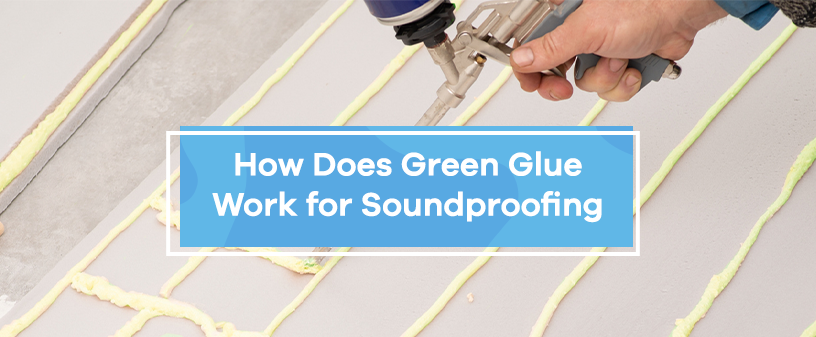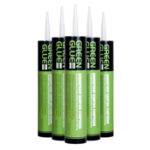
Green Glue is an effective soundproofing material that contractors or DIYers can use to improve a room’s acoustic qualities. Sound energy can pass through surfaces and cause that surface to vibrate. With Green Glue, you can reduce vibrations inside the walls so that sound stays in or out of the room.
What Is Green Glue and How Does It Work?
Green Glue is a viscous liquid compound that, like typical glue, connects two objects or surfaces. However, unlike standard glue, adhesive strength is not one of its primary benefits. It is a sound-deadening tool.
Technically not glue, Green Glue prevents energy from transferring between two surfaces. It does not harden like standard glue. Instead, it retains most of its viscosity to dissipate sound better. The light green color is subtle but present enough to earn its branded name from the Green Glue Company.
When Is Green Glue Useful?
Green Glue is ideal as a sound-deadening solution in homes and commercial buildings. Builders can use it when constructing rooms that require a high level of control over sound transmission. For example, it can help prevent noise from entering a room through the walls or retain noise inside a loud rehearsal space. Green Glue is also non-toxic, low in volatile organic compounds (VOCs) and odorless for safe use.
Does Green Glue Soundproofing Work?
Yes, Green Glue is an effective product with soundproofing qualities. Green Glue offers sound deadening or dampening, which is the process of reducing vibrations to prevent sound from moving through a surface.
Sound travels as a wave with energy that vibrates the air’s particles. It can move through solid surfaces the same way. However, if the surface resists vibration, the soundwave will expend more energy in its attempt to transmit. As a sound-deadening solution, Green Glue prevents sound from transmitting through walls.
Green Glue’s Sound-Deadening Capabilities
Sound energy attempts to move through a wall by vibrating the drywall and studs. These surfaces physically touch, allowing sound to travel from one to the next seamlessly. Green Glue reduces sound transmission by separating these physical surfaces.
Applying Green Glue between layers of drywall or plywood creates an absorptive layer that dissipates the energy from a vibrating wall. The soundwave’s amplitude decreases by the time it reaches the second material, meaning any sound that transmits through the entire wall is quieter than it would have been. Green Glue stays in a viscous liquid form so it can absorb more energy than standard glue that hardens over time.
Green Glue as a Decoupler
Green Glue also offers a decoupling effect. In addition to connecting two objects with an absorbent liquid layer, it also creates a gap between those two objects.
Decoupling is the process of disrupting a sound’s transmission by creating an air gap between two surfaces. It is one of the most effective ways to soundproof a room, and it occurs on a small level when applying Green Glue between a wall’s materials.
Proper decoupling involves more steps than this, but Green Glue can contribute to a successful decoupling project.
Where to Find Good Green Glue
You can purchase Green Glue online through Soundproof Cow. We offer this non-toxic sound-dampening compound by the case for a competitive price. Our Green Glue cases typically ship within three business days to help you keep your construction or remodeling project on schedule.
For more information about Green Glue or to receive a quote for any of our soundproofing solutions, contact Soundproof Cow online or call 866-949-9269 today!








